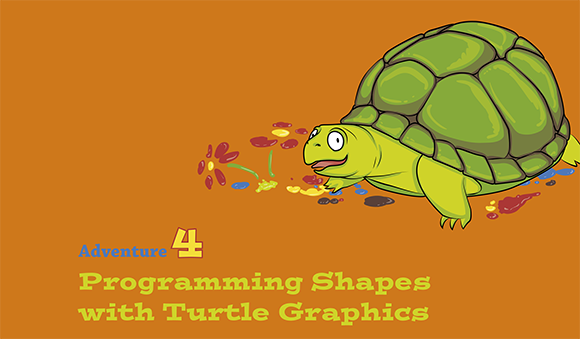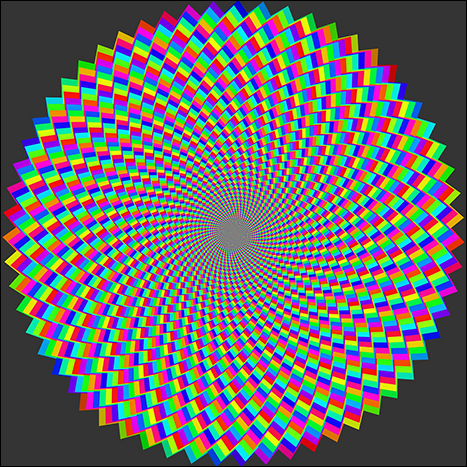
SUPPOSE YOU COULD pick up a turtle, dip his tail into coloured ink, place him on a piece of paper and make him walk around so that his tail paints a spiral shape, a pentagon or a noughts and crosses grid? This adventure introduces you to different ways that you can create shapes or line drawings using code.
You’ll use a module called Turtle Graphics that works by directing a cursor (or turtle) around the screen using movement instructions; see an example of the result in Figure 4-1. This movement leaves a colour trail like a pen, which means you are able to program a computer to draw. Turtle Graphics was originally a feature of the programming language LOGO (Logic Oriented Graphic Oriented), which was designed to teach young people how to program using a logical sequence of steps by means of an onscreen cursor called a turtle. LOGO continues to be a very popular way to learn logic and sequencing in computer programming. Both Scratch and Python include turtle modules that can be used to create shapes, drawings and patterns.
This adventure draws on many of the computing concepts you have already used in previous tutorials in this book, such as sequencing, variables and loops, to create shapes and spirals in both Scratch and Python programming environments on the Raspberry Pi.

Get Adventures in Raspberry Pi, 2nd Edition now with the O’Reilly learning platform.
O’Reilly members experience books, live events, courses curated by job role, and more from O’Reilly and nearly 200 top publishers.

